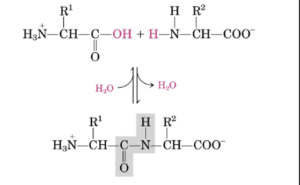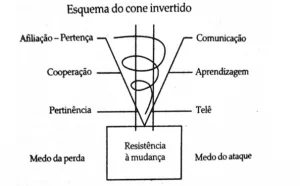REVIEW ARTICLE
SOUZA, Jeane Mendes Pinheiro de [1]
SOUZA, Jeane Mendes Pinheiro de. Depression Among Teachers In Brazil: A Literature Review. Revista Científica Multidisciplinar Núcleo do Conhecimento. Year 06, Ed. 06, Vol. 12, pp. 128-141. June 2021. ISSN: 2448-0959, Access Link: https://www.nucleodoconhecimento.com.br/psychology/depression-among-teachers, DOI: 10.32749/nucleodoconhecimento.com.br/psychology/depression-among-teachers
SUMMARY
Nowadays, health problems involving work-related stress are an increasingly common reality. In this context, there are professions and professionals who are more exposed and subject to these types of pathologies, such as education professionals. Studies conducted around the world indicate that educators are at great risk of suffering physical and/or mental exhaustion, which involve the material and psychological difficulties associated with the exercise of teaching activity. It is known that such health problems greatly compromise the quality of life of these professionals and, among these, depression in its manifestations that can involve melancholy and sadness in various forms and at various levels stands out. The commitment of the quality of life of these professionals makes it increasingly necessary to deepen research and approaches that can collaborate in order to find alternatives that minimize the effects of this evil. Due to the above, this work aims to conduct a study on depression and its occurrence among teachers. As a methodology, a bibliographic research was carried out with a review of studies and authors that deepen the approach to subjects depression, depression among teachers, melancholy and alternatives to coping with depression.
Keywords: Depression, Quality of life, Melancholy, Sadness, Education Professionals.
1. INTRODUCTION
At each time, according to the culture and customs of each society, new diseases and pathologies emerge that affect individuals and social groups. This is due to the nature of the behavior and charges to which people are subjected, which is due to the values and needs that are highlighted in each epoch. Thus, even professions that have a long history, recognized for their importance, are able to be affected by the reflections of changes in values and behavior.
Thus, it is found as a current reality the high incidence of cases of depression in society as a whole and, more specifically, among professions that require a great effort, due to the stress they represent, such as teaching. It is known that there is a high incidence of depression among teachers, a disease seen as the evil of the century and the fourth world cause of illness and that affects people of the most varied cultures, age groups and social classes (AROS, 2008).
One of the causes of depression among teachers is that the work is performed in conflicting environments with a high load of work requirements, among which stand out the many extra-class tasks, meetings and additional activities. In addition, problems with students that can reach verbal and physical threats and aggressions are very common. This stressful reality impacts on the physical and mental health and professional performance of teachers (CAPEL, 1987).
It is important to highlight that, in this context, when the teacher becomes ill, the school has impaired its social function that ultimately does not materialize. Thus, the formation of citizens and the construction of autonomy and an awareness of citizenship are compromised. Depression in its most varied degrees has been considered one of the diseases that are part of the picture of The Syndrome of Professional Exhaustion (Burnout) (MINISTÉRIO DA SAÚDE, 2001).
Considering the importance of the problem and the need to discuss the most relevant aspects on the subject, this work aims to conduct a study on depression and its occurrence among teachers. As a methodology, a bibliographic research was carried out with a review of studies and authors that deepen the approach to subjects depression, depression among teachers, melancholy, sadness and alternatives to coping with depression.
2. DEPRESSION
According to the World Health Organization (WHO, 2002) depression is a common mental disorder, which has as characteristics “sadness, loss of interest, lack of pleasure, oscillations between feeling of guilt and low self-esteem, in addition to sleep or appetite disorders” and “feeling tired and lack of concentration”. It is noteworthy that the degree of disability credited to depressive disorders is higher than in other chronic physical diseases, such as hypertension, diabetes mellitus or arthritis.
Accidental or reactional types of depression that are motivated are something that may have modified or transformed a person’s life in some way. What is conventionally called depressive life occurs when depression is permanent, which can be seen in people who always show a feeling of discomfort. In this case, the few moments in which they are well are passengers, not constituting a solid basis for life (TATOSSIAN, 2012).
In depression there are several manifestations that configure this problem. Sadness can be considered as a symptom of depressive conditions and expresses an outward manifestation of problems arising from the psyche. This type of manifestation is not especially highlighted, because it has in its relevance the degree of occurrence and permanence that varies greatly. However, it can compromise quality of life when it occurs frequently (FUCHS, 2013).
With regard to melancholy, it differs from sadness due to the different levels they occupy in the subject’s psychic life. Melancholy “is characterized as a disturbance of the order of humor and not of feeling, such as sadness. feeling is an action, an affective movement and, therefore, it has direction to anything or someone” (TATOSSIAN, 2012).
2.1 MELANCHOLY: A FORM OF DEPRESSION
The term melancholy is used according to the Diagnostic and Statistical Manual of Mental Disorders (DSM IV) to determine a subtype of depression. Unlike other forms of evil, melancholic depression may have as a determining factor genetic aspects would be the main determinants. Psychomotor alterations stand out in this type of depression (LAFER et al., 1996).
According to Tatossian (2006, p. 113), melancholic depression occurs when there is, in the author’s words, “an experience of emurcheamento and delinof the lived, the loss of freshness”. The feeling of melancholy is responsible for suffering due to the isolation experienced by the subject. In this context, it is important to differentiate the normal suffering from a melancholy suffering, because melancholy causes more than can be expressed with episodes of sadness, which are only one of the forms of expression of melancholy.
At the same time, melancholy manifests itself as one of the forms of depression, having in its cause a neurochemical dysfunction that can be corrected by the action of psychotropic drugs. According to Freud, the term melancholy would be used as a reference to a more intense, more severe depressive state, in which several elements were added. The word melancholy would be used to define a picture with a predominance of intense depressive affects (DELOUYA, 2002, p. 22).
2.3 SADNESS AND DEPRESSION
Sadness and depression are very commonly confused, however, they differ, because there is an eventuality related to sadness, since depression occurs in a context of a certain constancy of this sadness. “Sadness is part of the human condition, as are many other feelings. One can be upset because that day there was no production of what was wanted, or even due to an argument, but the sadness passes.” On the other hand, when it comes to depression, there is a greater involvement or impairment of other areas, such as behavior, psychomotricity, expression of thought and neurovegetative so-called, linked to sleep and feeding. When it comes to the diagnosis of depression, two basic symptoms are sought: “what is called depressed mood, which is this sadness, hopelessness, emptiness, anguish, sometimes crying, even an irritability; and the loss or decrease of interest or pleasure in the things of life” (SENE-COSTA, 2011, p. 37).
3. DEPRESSION AMONG TEACHERS
According to the International Labour Organization (OIT), the role of teachers in society is essential to the formation of the citizen for life. Due to the nature of their work, these professionals have a great responsibility, but, on the other hand, there are no working conditions ideas that can contribute to the safety and health of these professionals (OIT, 1984).
Among the health problems that have affected these professionals, depression stands out. Among the factors that contribute to the emergence of this problem, “overwork, classroom indiscipline, low salary, violence, demands of parents of students, bombardment of information, physical exhaustion and, mainly, lack of recognition of their activity” (GASPARINI et al., 2005).
This information is corroborated by studies that prove these occurrences, such as the following, in D’Agostini’s report (2019):
According to a survey by the Organization for Economic Cooperation and Development (OCDE) with more than 100,000 teachers and principals of schools in the second cycle of elementary school, brazil is the country with the highest rate of violence against teachers.The survey was conducted with 34 countries and found that 12.5% of Brazilian teachers have been victims of verbal aggression or intimidation of students at least once a week (D’AGOSTINI, 2019).
When considering working conditions, the circumstances in which teachers have to use their physical, cognitive and affective abilities in order to act in the formation of people, this responsibility can lead to a much greater effort than should be employed by teachers, which triggers a stress, which is a major cause of depression (GASPARINI , 2005).
3.1 CONTEXT AND CAUSES
Nowadays, the role that the teacher plays goes beyond what is expected in the mediation of the student’s knowledge process. The teacher’s performance exceeded the limits of the classroom so that it was possible to establish communication between the school and the school community. Thus, the teacher, in addition to teaching, is responsible for participating in school management and planning. Thus, it needs to devote more, including in its responsibilities to families and the community.
The complexity of the tasks that teachers must take into account often means of requalification and time for the necessary knowledge to be acquired. Thus, educators end up having to look for alternatives for themselves that translate into an unrecognized and unpaid increase in working hours (OLIVEIRA, 2003).
A study conducted in several locations, such as Belo Horizonte and Montes Claros (MG), Vitória da Conquista and Salvador (BA), Santa Maria (RS) and Campinas (SP), among others, with the objective of verifying the teacher’s health conditions, indicated a high incidence of medical leave applications and their motivations. The following were pointed out as motivations, aspects related to working conditions: among others, “excessive tasks and noise, pressure for professional requalification, lack of institutional support and teachers in a necessary number”. The study also points out that such problems “generate an over-effort in performing their tasks”. The conclusions show that “the results measured in the various cities are convergent and that teachers are more subject than other groups to have psychic disorders of varying intensity” (CURI, 2010).
Education professionals feel pressured Many of these pressure elements are the result of a reconfiguration of the world of work, which was not carried out to the satisfaction with regard to meeting the needs of the teacher on the same scale on which it is charged. The school system transfers to the professional the responsibility for covering the gaps in the institution, which establishes rigid and redundant mechanisms of professional evaluation, says Sandra Gasparini (CURI, 2010).
Due to the devaluation of the teaching career, there was a significant increase in psychic problems among teachers due to the change in values and the growth of the call to consumption and the appreciation of having to the detriment of being. In a 2003 survey conducted by the Union of Teachers of Official Education of the State of São Paulo (Apeoesp), a percentage of “46% of teachers who have already diagnosed some type of stress was pointed out, reaching a percentage of 51% among women (CURI, 2010).
According to the National Confederation of Education Workers (CNTE), in Mato Grosso do Sul, “more than 60% of medical leave granted to education workers in the state is for teachers. Of the total number of licenses, 38% are related to mental and behavioral disorders, the main reason for absences” (CURI, 2010).
Another reason for stress for teachers is the constant fear of losing their jobs among teachers from private institutions: in some (institutions), students make a riot against the teacher and the school prefers to dismiss the professional, even without a real reason. In public schools, the constant pressure for numbers that indicate high percentages of approval, due to the performance evaluation and meritocracy adopted by the administrations of some cities and states, is imposed a pressure on teachers. This insecurity can contribute decisively to the depression among teachers, which can occur, both among professionals working in public schools, and among teachers of the private school system (CURI, 2010).
3.2 EFFECTS AND CONSEQUENCES
Stress and depression related to events during work routines are common for education professionals. Examples of this are occurrences after episodes of violence against educators. It is possible to mention the occurrences in 2018 registered with the Municipal Department of Education in the city of Rio de Janeiro that “issued 3,055 licenses for diseases related to stress and depression”, where “a teacher is licensed every three hours for stress-related diseases” (D’AGOSTINI, 2019).
School violence can have health impacts that can lead to longer effects, such as depression, but can also arise from the pre-existing depressive condition itself. The main impacts of school violence on health are considered “psychosomatic symptoms such as headaches, dizziness, nausea, diarrhea, enuresis, sweating, aquicardia, muscle pain, sleep changes (insomnia or excessive sleep)”; consequences of “”stress that can increase vulnerability to diseases by decreasing immune resistance; psychological problems “such as anxiety, fear, anger, irritability, restlessness, tiredness, insecurity, isolation, impotence, rejection, sadness, anguish, low self-esteem, depression and suicidal thoughts, among others; socialization problems, with the increase of “social isolation, generating insecurity that can affect trust in the other, the ability to express oneself in public, to resolve conflicts and make decisions” (D’AGOSTINI, 2019).
3.3 PATHS AND ALTERNATIVES FOR COPING WITH DEPRESSION
According to the health professionals involved in the treatment of depression, there are alternatives and pathways that differ, which depends on the degree of wear and depth of the depression picture. It is possible, in some cases, that the person may undergo psychotherapy only; may be temporarily medicated with anxiolytic or antidepressant, concomitantly with psychotherapy, and sometimes there are cases in which the professional needs to be moved to a bureaucratic function or has to work with another profile of students (D’AGOSTINI, 2019).
It is important to highlight that there are projects that can be adopted by schools and educational networks, such as that implemented in a school in Ribeirão Preto, SP, which aimed to “develop self-esteem, tolerance and cooperation among students”. The project was adopted due to the school presenting a “high rate of violence in the place and difficulties in the teaching-learning process”. The idea is “to adopt preventive measures against violence, which, although focused on students, impact the school climate as a whole and positively promote more mental health in educational institutions” (D’AGOSTINI, 2019).
Also other actions that can be effective are the reflection “on the factors that lead to the depressive state of teachers through the narratives of the individuals themselves. This makes it possible to understand “how the teacher experiences the disease, what their expectations are about overcoming the problem and especially and how teaching is resignified after leave”. This understanding makes it possible to develop programs to “identify, assist and treat professionals affected by depression, as well as to help managers and education professionals identify the signs of the body, symptoms and behaviors characteristic of the disease” (SOUZA e SOUZA, 2015, p. 182).
By sharing experiences and having contact with other narratives, the education professional can rethink his/her trajectory, which can avoid a departure from the profession. It is also possible to analyze the causes of stress in teaching, making it possible for educators to “see which problems contribute to illness in their profession and how to minimize these problems” (SOUZA e SOUZA, 2015, p. 182).
3.4 PROPOSALS FOR ACTIONS TO BE ADOPTED
It is suggested to adopt a pet as a way to face the effects of depression. With the relationship that is established due to the interaction that is necessary and that also occurs spontaneously, it is necessary to perform activities that increase serotonin and dopamine levels, which are linked to the feeling of well-being. The attention and care that are encouraged by the desire to promote well-being to the pet cause, in a natural way, physical activities, such as walking or playing, that release endorphins that relieve the symptoms of the disease. According to experts, the proximity of a pet can ward off negative thoughts and lessen anguish, sadness and loneliness (REED et al., 2012).
Depression due to its character of inactivity can and should be faced by activities that stimulate those who suffer from this evil. Thus, dance can act to reduce the symptoms of depression and anxiety. Dancing means that the expression of feelings and the improvement of a self-perception about emotions can occur, which can also contribute to the physical and social well-being of people suffering from this evil. It is also known that dance can have positive effects on mood, in addition to an improvement in aerobic capacity, flexibility and ability to perceive the body, which can lead to an improvement in self-esteem that is usually impaired due to depression. Dancing improves self-knowledge and stimulates the appreciation of one’s own body and the capacity it demonstrates of expression (SILVA, 2015).
Another attitude to adopt is the rescue of the perception of pleasure in the simple things and moments of everyday life. The idea is that one can perceive the meaning and pleasure in actions, events and occurrences of everyday life so that one can also value what is greatest also occurs. One should begin to observe what is beautiful and that awakens this perception of each one and that can vary in a lot, flowers, moments of the day (sunrise or sunset), the taste of a food, in small abstractions that will work differently for each one, but that will have the same effect. The idea, for those who already present a depressive condition, is “to relearn to focus on what cannot be realized due to the disease” (GAUER, 1997).
Another measure to be adopted is to engage in activities that provide pleasure, which can also vary greatly, depending on each person. for those who already have depression, one should “start performing activities that were once fun” again. It is important to determine, however, what arouses interest at the moment, which may have changed. If necessary, new forms of fun should be sought. This can be stimulated by people with whom those suffering from depression live or by themselves, without giving up seeking some activity that is pleasurable, even if it does not work in a few moments. It is important to seek “novelties, learn new and pleasurable things”, which avoids the failure of actions (GAUER, 1997).
Another essential measure for people suffering from depression is balanced and healthy sleep because, typically, these people sleep too much or can’t get to sleep. According to experts this is due “to changes in serotonin and norepinephrine levels, hormones that regulate sleep. Since “sleep is essential for the brain to regulate these hormones again and mitigate the effects of depression”, it should occur in balance without exaggeration or absence. For those who lack sleep, breathing exercises are indicated for relaxation and facilitation when falling asleep. If the person sleeps too much, it is indicated that it is awakened and stimulated in some way so that it does not sleep excessively (GAUER, 1997).
4. FINAL CONSIDERATIONS
It is observed as a reality of contemporary society that teachers demonstrate to have a greater propensity to psychic suffering among which stands out depression in its stages or severity scale. By analyzing the relationships between health and work, it is possible to perceive the associations between the identified problems and the conditions and characteristics of the work described.
Education professionals, being exposed to high levels of stress, which occurs for different reasons, end up victimized by depression that arises in various ways and can reach levels that end up leading the professional to leave work, without understanding what motivates him, without which it may become impossible to return the professional to perform the profession for which he was trained and unique with which he/she was trained and unique with which he/she was often has experience.
Many education professionals find themselves unmotivated for work, but have no alternative but to continue, because they need it for their livelihood. The vast majority cannot waste the time invested in their training and the unique professional experiences accumulated throughout a professional career and continue, even without minimum conditions for performing the work. This is to the detriment of all: professionals and society as a whole.
Thus, it is essential that there is appreciation of professionals and the reception of institutions that should listen and provide moments so that professionals can express their fears, discontents and feelings. Alternative education professionals should be offered to approach those who are already ill and prophylaxis for those who may become ill. It is known that there should be treatment for those who are already in depression, but the reintegration of these professionals involves the need for them to be welcomed, heard and guided.
REFERENCES
AROS, M.S. Produção científica sobre depressão: Análises de resumos. Campinas, SP. Universidade Católica de Campinas, 2008.
CAPEL, S.A. The incidence of and influences on stress and burnout in secondary school teachers. Br J Educ Psychol 1987; 57:279-88.
CARLOTTO, M.S. Burnout e o trabalho docente: considerações sobre a intervenção. Revista Eletrônica InterAção Psy 2003; 1:12-8.
CURI, F. O professor brasileiro está doente. Revista Educação – Edição 119, 2010. Disponível em: <http://stellabortoni.com.br/index.php/artigos/1177-o-paofissoa-baasiliiao-ista-ioioti>. Acesso em: 17 de Jan. de 2021.
D’AGOSTINI, A. C. Brasil lidera índice de violência contra professores: o que podemos fazer? Nova Escola, Junho/2019. Disponível em:< https://novaescola.org.br/ conteudo/17609/brasil-lidera-indice-de-violencia-contra-professores-o-que-podemos-fazer>. Acesso em: 10 de jan. de 2021.
DELOUYA, D. Depressão estação psique. São Paulo: Escuta – Fapesp, 2002.
FUCHS, T. Depression, intercorporeality, and interaffectivity. Journal of Consciousness Studies, 20(7-8), 219-38, 2013.
GASPARINI, S. M.; BARRETO, S. M.; ASSUNÇÃO, A. A. O professor, as condições de trabalho e os efeitos sobre sua saúde. Educ. Pesqui. São Paulo, v. 31, n. 2, p. 189-199, Ago. 2005. Disponível em: <http://www.scielo.br/scielo. php?script=sci_arttext&pid=S151797022005000200003&lng=en&nrm=iso>. Accesso em: 19 Jan. 2021.
GAUER, G. et al. Terapias alternativas: uma questão contemporânea em psicologia. Psicol. cienc. prof., Brasília , v. 17, n. 2, p. 21-32, 1997. Disponível em:<http://pepsic.bvsalud.org/scielo.php?script=sci_arttext&pid=S141498931997000200004&lng=pt&nrm=iso>. Acesso em: 18 de jan. 2021.
LAFER, B.; NIERENBERG, A. A.; ROSENBAUM, J. F.; FAVA, M. Outpatients with DSM-III-R versus DSM IV Melancholic Depression. Comprehensive Psychiatry 1996;37(1):37-9.
MINISTÉRIO DA SAÚDE. Doenças relacionadas ao trabalho: manual de procedimentos para os serviços de saúde. Brasília: Ministério da Saúde, 2001.
MOREIRA, A. G. C. Clínica da melancolia. São Paulo: Escuta – Edufpa, 2002.
OLIVEIRA, D. A. As reformas educacionais e suas repercussões sobre o trabalho docente. In _____. Reformas educacionais na América Latina e os trabalhadores docentes. Autêntica: Belo Horizonte, 2003, p. 13-35.
ORGANIZAÇÃO INTERNACIONAL DO TRABALHO. A condição dos professores: recomendação Internacional de 1966, um instrumento para a melhoria da condição dos professores. Genebra: OIT/ Unesco, 1984.
ORGANIZAÇÃO MUNDIAL DA SAÚDE (OMS). Relatório Mundial de Saúde. Lisboa: Climepsi Editores, 2002.
REED, R.; FERRER, L.; VILLEGAS, N. Curadores naturais: uma revisão da terapia e atividades assistidas por animais como tratamento complementar de doenças crônicas. Rev. Latino-Am. Enfermagem. maio-jun. 2012.
SENE-COSTA, Elizabeth. As emoções e os transtornos depressivos. O teatro do perdão como palco de resgates. Rev. bras. psicodrama, São Paulo , v. 19, n. 2, p. 85-99, 2011.Disponível em: <http://pepsic.bvsalud.org/scielo.php?script=sci_arttext& pid=S010453932011000200008&lng=pt&nrm=iso>. Acesso em: 02 jan. 2021.
SILVA, V. A. Benefícios afetivo-sociais da prática da dança para estudantes dos Núcleos de Arte da Prefeitura do Rio de Janeiro. Tese de Doutoramento. Faculdade de Motricidade Humana, Universidade de Lisboa, 2015.
SOUZA, E. C. Conte sua história: doença, crônica, narrativas e reconstrução biográfica. Curitiba: CRV, 2016.
TATOSSIAN, A. A fenomenologia das psicoses. São Paulo, SP: Escuta, 2006.
TATOSSIAN, A. Fenomenologia da depressão. In TATOSSIAN, A.; MOREIRA, V. Clínica do Lebenswelt: Psicoterapia e psicopatologia fenomenológica. São Paulo, SP: Escuta, 2012.
[1] Postgraduate in Cognitive Behavioral Therapy from UNINTER; Graduated in Psychology from Cesupi Faculdade de Ilhéus.
Submitted: March, 2021.
Approved: June, 2021.




